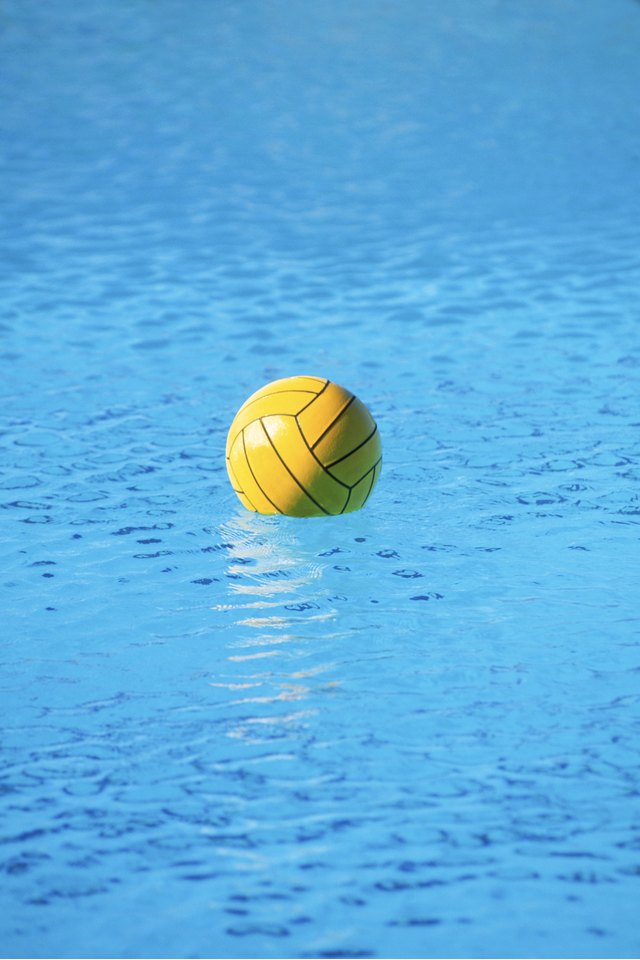What Is a Volleyball Pool?

Though volleyball is traditionally a land-based sport played on courts or sand beaches, it's possible to play a version of the game in the water as well. Volleyball played in a pool follows the same general rules as other forms of volleyball, though team sizes are typically smaller and the use of house rules is encouraged. Despite the differences in swimming pools, volleyball can be played in a variety of pool shapes and sizes.
Pool Volleyball Kits
To prepare a pool for use in a volleyball game, a pool volleyball kit is required. This kit consists of a net and the mounting hardware required to hold it above the water. Kits can be permanently installed and attached to the pool itself or can be temporary so the net and its supports can be taken down and stored when not in use. Depending on the kit, floating boundary ropes or other markers may be included.
Pool Type
Both in-ground and above-ground pools can be used for pool volleyball. Kits to install volleyball nets are available for both types of pools, though the method of installation and whether the kit can be attached permanently may differ. Also consider whether you use salt water, chlorine or other methods to keep your pool clean; salt water can corrode some metal components of your mounting kit if you use an in-pool installation option.
Pool Depth
Though a variety of depths can be used for pool volleyball, shallow water is generally preferred over deep water because it allows players to move more freely and jump up to hit the ball. Many pools have variable depths, gradually deepening toward one end of the pool or toward the center; for these pools it is recommended that teams switch sides between matches so neither team has a depth-based advantage for too long. Pools with an even depth from one end to the other eliminate the need for this, though they are less common than variable-depth pools.
Size and Shape
Both large and small pools can be used for pool volleyball, with the size of the pool often being a contributing factor in the number of players who can participate. If you have a smaller pool, limit teams to between four and six players or however many players can fit on each side of the net comfortably; larger pools don't need this restriction. Rectangular or oval pools typically offer more room for players than round pools or pools in less common shapes, though these pools can still be used. Use of round pools or other shapes may restrict the number of players.
Decking and Walkways
Having a deck or other walkway surrounding the pool can be convenient for pool volleyball, but isn't a requirement. Decking or other flat surfaces can be used to store extra balls or other equipment, allows spectators to be close to the action and provides a convenient place to store drinking water or other refreshments. House rules need to address the decking or walkways to determine whether balls that hit the decking are considered out-of-play and whether this applies to balls that bounce off of it and back into the play area.
Boundaries
For larger pools or pools that are oddly shaped, artificial boundaries may need to be established before you can play pool volleyball. Floating ropes and other markers can be used to establish court boundaries, serving as a visible indicator of which areas in the pool are considered in-play and which are considered out-of-bounds. Other boundary markers such as chairs, shoes and other objects on the deck or in the yard surrounding the pool may also be used, though they may not provide as accurate an indicator as in-pool markers and boundary ropes would.
References
Resources
Writer Bio
Born in West Virginia, Jack Gerard now lives in Kentucky. A writer and editor with more than 10 years of experience, he has written both articles and poetry for publication in magazines and online. A former nationally ranked sport fencer, Gerard also spent several years as a fencing coach and trainer.
